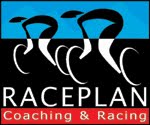A rather unusually large number of you have inquired about strength training in concert with on-the-bike training this time of year. Could be that Thanksgiving is here, could be the change in daylight, or could be the new phase of the moon. Not sure. But I thought perhaps some of you can benefit from the following:
Q: will strength training work for me?
A: umm, yeah! if you do it right. just like anything else you'll get what you put into it. meaning if you just go to the gym and lift you will gain some initial strength but that will plateau after a while. If you follow a periodized plan that builds strength and peaks it based on your training/racing goals, you will get much better results. Remember, you are investing the time and energy so make sure you're also getting the most benefit in return.
Q: how many days per week should I lift?
A: It totally depends on number of factors such as your experience (athletic age) and current fitness level, if you have been following a strength program, your goals, if you have any injuries, other training you are doing, etc. The one thing you don't want to do is go from scratch to lifting hard. Consider this: it takes between 4-6 weeks for damaged muscles to repair themselves. If you lift hard without having the proper foundation you will tear your muscles. Training on top of that will only further the damage and this is how people end up getting injured or with Chronic Fatigue Syndrome or audited by the IRS.
Q: I prefer Yoga instead of going to the gym and being a muscle head. Will that work?
A: Initially yes. you will gain some general strength and flexibility, which helps especially if you are a masters athlete. Depending on your goals, at some point you want to incorporate specificity into your strength program. Kind of like if you ride 300 miles per week at 20MPH, you'll have a hard time racing a TT at 28MPH.
==>I'll tell you what, during the transition and foundation phases (see below) one of the best things you can do is to attend a boot camp two or three times per week. Be sure to work out the details with your instructor so s/he works with you to ramp up. Boot camps are in baby...you get a great strength workout on top of a great cardiovascular workout. Patrick Jak, the infamous Raceplan coach, who is also a strength train pain master, is starting a boot camp in the Del Mar/Carmel Valley area. If you are interested, please email him at Pat@raceplan.com
Q: What are the most important areas to strength train for cycling?
A: you can not ever go wrong with strengthening your core...ever! The area from the bottom of your rib cage to about the middle of your hamstrings do the majority of work. So hit these but don't neglect the other areas. For cycling, general all around strength is key, but you won't need 32 inch biceps! Generally speaking, start from your lower back and stomach and work down to your calves.
Last, this is very *general* strength training calendar I have used with my athletes over the past 6 years. I modify this calendar based to accommodate for athletic maturity, goals, geographic location, racing season, etc., which also determine the specificity of exercises and number of reps/sets. We also perform a strength test after the initial transition phase to determine the athlete's level of fitness and intensity level for his/her training...this is similar to an LT/VO2 test and will help determine the actual amount of weight the athlete should throw around in the gym.
| RACEPLAN STRENGTH TRAINING SCHEDULE |
| MONTH | PHASE | GOAL | WEEKS | ACTIVITY | DAYS/WEEK | INTENSITY |
| November-December | Transition | Prepare the muscular-skeletal system for more strenuous strength training | 3-4 | 3 sets of 15-20 reps | 2-3 | <50% |
| December-January | Foundation | Increase weight and intensity, start building more foundation to prepare the body for more intensity by building gradually | 4-6 | 3-4 sets, 8-12 reps | 3 | 50%-70% |
| January-February | Basic | Start the first intensity phase by lowering the reps and increasing the number of sets and weight. | 4-6 | 5-7 sets, 2-6 reps | 3 | 80%-100% |
| February-March | Power | This is where we transition from the strength you've built to date by focusing it towards the specific task of cycling. Form and technique play an important role as we slow the negative stroke and explode on the positive. You'll also do one-legged exercises, while transitioning between spinning. | 4-6 | 5-6 sets of 11-15 reps | 2-3 | <70% |
| April => | Peaking | Further focusing of strength built in the gym to the specific task of cycling. If you're a masters cyclist, you'll continue strength work through the season with 1-2 days a week. All other cyclists, including junior cyclists, transition from gym work to on-the-bike strength work. | 4+ | 1-3 sets of 6-10 reps | 2-Jan | <60% |
| Kam Zardouzian |  | | | | | | | |
| |






